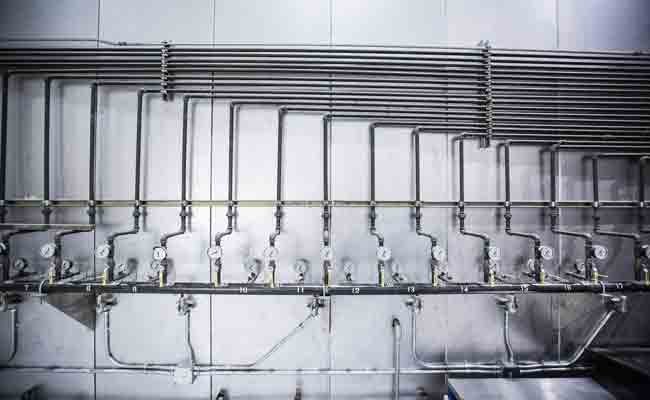
6 PPe Items List To Stock Up On
December 5, 2020
The Top Knee High Boots Styling Tips To Go With
December 11, 2020Top 6 Industrial Ball Valves Uses In Factories
Hello friends how are you all? Today we are going to talk about the Top 6 Industrial Ball Valves Uses In Factories. If you are running an industrial factory, it is crucial that you know the most important pieces of the machinery that you are using. One such apparatus is Industrial ball valves. Although for novices this piece of equipment is not easy to distinguish from other valves, they have their own characteristics and are very necessary when it comes to preventing leaks in pipes.
What is Ball Valves?
Industrial Ball valves are a type of quarter-turn valves that utilize a hollow, perforated, and pivoting ball that will control the flow that passes through it. The valve is opened when the ball’s hole is in line with the flow and closed when pivoted at a 90’degree angle.
As whole ball valves are usually very durable and perform well even after many cycles. They could also take a great deal of damage. These attributes make them an excellent choice for shutoff and control functions. There are various types of ball valves, and it pays to know what they are if you want your factory to run as smoothly as possible. Here are the top ball valves for industrial factories.
Forged Ball Valves
This type of ball valve contains a small-caliber ball valve that is cast forged. This valve is a lot denser because of its casting. Construction-wise, the ball valve has its closing parts rotated around the centerline of the valve. This is meant to achieve an efficient opening and closing function. The ball valve is embedded in the stainless valve seat, and it is a great choice for on and off applications. Due to its forged quality, it is a lot more robust compared to other ball valves, and it can be used for heavy-duty applications.
Cryogenic Floating Ball Valve
When you run an industrial factory, there will be times where high hazard materials such as liquid nitrogen will need to pass through your piping, and if the ball valve’s material is not capable of taking the extreme cold, it will surely crack, and the material will surely leak and cause a lot of damage to your equipment.
This is where the cryogenic ball valve comes in very handy. The Cryogenic floating ball valve is technically a liquid nitrogen ball valve. It is meant for low-temperature working conditions and could hold and transport very hazardous liquids and gases.
Trunnion Ball Valve
This type of ball valve is used to control the flow of liquids and gases. Design-wise a trunnion ball valve has the ball constrained by bearings and could only rotate. The rest of the hydraulic load is supported by the system constraints. This means there is only low bearing pressure, and there is no strain on the shaft.
The main advantage of the trunnion ball design is that it has a lower operating torque. It could also be used a lot easier and has a minimized seat. Due to its stem/ball isolation design, the side loading and wear of downstream seats are prevented. This improves the valve’s overall performance and service life.
Trunnion valves also have a superior sealing performance at both high and low pressure. Its separate spring mechanism and upstream line pressure allow it to seal against the stationary ball for low pressure and high-pressure applications.
3-Way Ball Valve
Of all the ball valve types, this is by far the most common. However, despite their simplicity, they are especially useful because they can control gas and fluid flow very effectively. They could be used to transport oil or gas from one container to another. As a whole, a three-way valve has a myriad of applications.
Aside from cutting off or shutting down the flow of gases or liquids, it could also be used to divert materials from two different sources. They could also be used to combine the flow of gases and liquids from two different sources or even split-flow coming from one source between two destinations. Overall, the 3-Way ball valve is a very multi-faceted valve.
Top Entry Ball Valve
No matter how sturdy a ball valve is, there will be times where it will need to be maintained or fixed. This is where the top entry ball valve truly shines. Compared to its more compact or shielded counterparts, it is specifically designed for ease of use and repair.
As the name implies the ball valve could be opened from the top, which allows for easier and faster access to the ball and the valve trim. Construction-wise, the top entry ball valve is made of cast steel bodies, and are usually made up of one single piece. This type of ball valve is a great deal more expensive compared to other ball valve types, and could take a great deal more damage.
Floating Ball Valve
The floating ball valve has a more simplistic design compared to other ball valves. Its construction has the ball suspended in the flowing fluid. It is kept in position by having two elastomeric seats compressed against it.
At the top of the ball, a shaft is connected which allows it to switch from a closed to open position with just a 90-degree turn. Once the shaft is turned, the load will be applied which presses it against the seats.
It is of a more lightweight and utilitarian design and is suited for 10-inch bore sizes. Its lighter bore size makes it ideal for lighter applications, and it would not be able to withstand heavier applications.
Conclusion
If you want to run your industrial factory effectively, you will need to know every tool or piece of equipment that you use. Industrial Ball valves are one such tool. By knowing the best types of ball valves to use, you’ll be able to run your factory in the most effective way possible.




